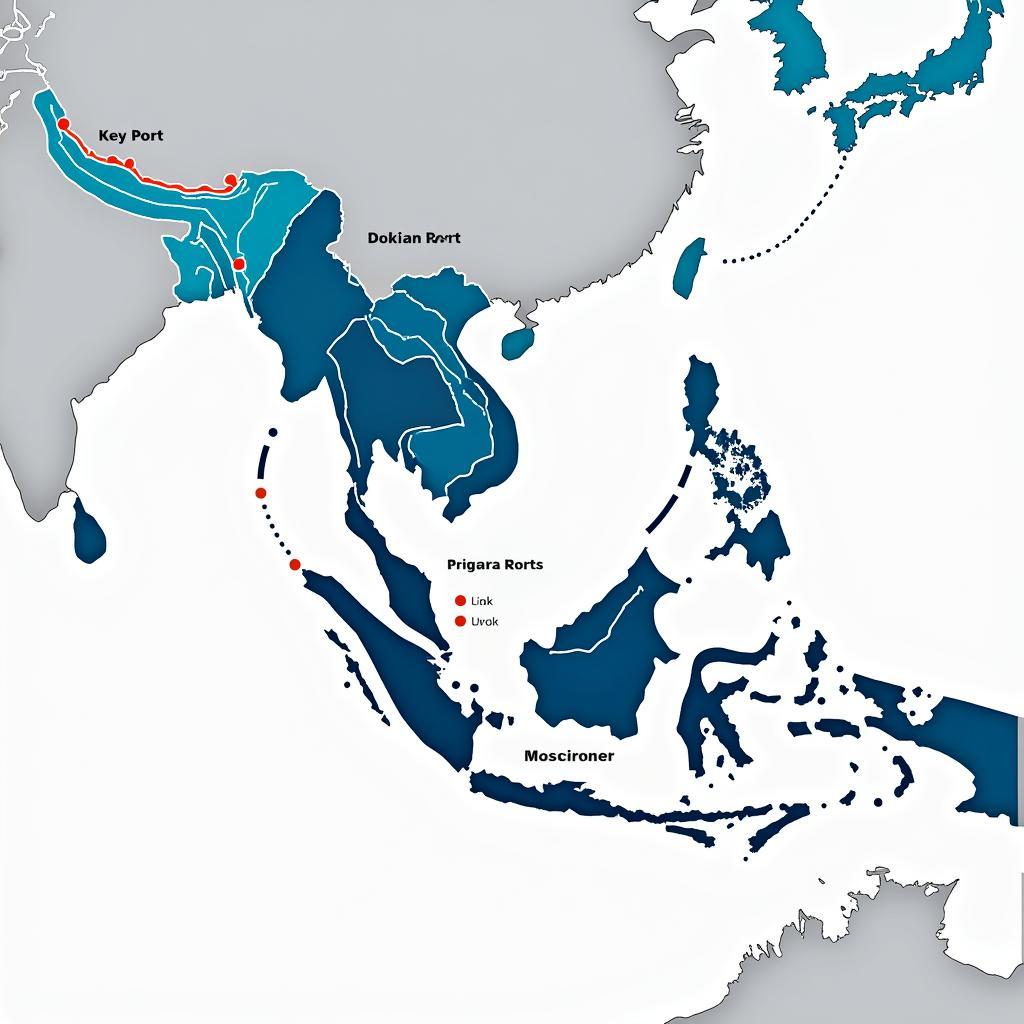The five foreign ministers who founded ASEAN laid the cornerstone for what has become one of the most dynamic and influential regional organizations in the world. Understanding their vision and the context in which ASEAN was born is crucial to appreciating the organization’s significance today. This article delves into the history of ASEAN’s formation, highlighting the contributions of these key figures and the lasting legacy of their work.
The Genesis of ASEAN: A Time of Turmoil and Opportunity
The 1960s were a turbulent decade for Southeast Asia. The Cold War cast a long shadow over the region, fueling ideological conflicts and proxy wars. Newly independent nations grappled with internal challenges and external pressures. Amidst this backdrop of uncertainty, five visionary leaders recognized the urgent need for regional cooperation and stability. These were the foreign ministers of Indonesia, Malaysia, the Philippines, Singapore, and Thailand.
The Bangkok Declaration: A Foundation for Peace and Prosperity
On August 8, 1967, the five foreign ministers – Adam Malik of Indonesia, Tun Abdul Razak of Malaysia, Narciso Ramos of the Philippines, S. Rajaratnam of Singapore, and Thanat Khoman of Thailand – gathered in Bangkok to sign a document that would change the course of Southeast Asian history: the Bangkok Declaration. This document, also known as the ASEAN Declaration, formally established the Association of Southeast Asian Nations.
The Bangkok Declaration outlined the fundamental principles and objectives of ASEAN, emphasizing regional cooperation in economic, social, cultural, technical, scientific, and administrative fields. It also stressed the importance of promoting regional peace and stability through adherence to the principles of the United Nations Charter.
5 Menteri Luar Negeri Pendiri ASEAN: Profiles of Visionaries
Each of the five foreign ministers brought unique perspectives and experiences to the table. Their collaborative efforts forged a shared vision for a more integrated and prosperous Southeast Asia.
Adam Malik (Indonesia)
Known for his pragmatic approach and diplomatic skills, Adam Malik played a key role in shaping ASEAN’s early development. He championed the idea of regional neutrality and advocated for peaceful conflict resolution.
Tun Abdul Razak (Malaysia)
Tun Abdul Razak, who later became Malaysia’s second Prime Minister, was instrumental in promoting economic cooperation within ASEAN. He envisioned a region where member states could work together to achieve shared prosperity.
Narciso Ramos (Philippines)
Narciso Ramos, a seasoned diplomat and father of future Philippine President Fidel V. Ramos, brought his extensive experience in international relations to the ASEAN table. He was a strong advocate for regional solidarity and cooperation.
S. Rajaratnam (Singapore)
S. Rajaratnam, Singapore’s first Foreign Minister, played a crucial role in articulating the principles and objectives of ASEAN. His intellectual prowess and clarity of vision helped shape the organization’s foundational documents.
Thanat Khoman (Thailand)
Thanat Khoman, a skilled negotiator and advocate for regional security, was instrumental in shaping ASEAN’s approach to international relations. He believed that a united Southeast Asia would have a stronger voice on the global stage.
A Legacy of Cooperation and Progress
The vision of the 5 Menteri Luar Negeri Pendiri Asean has endured, shaping the trajectory of Southeast Asia for over five decades. ASEAN has become a vital platform for regional dialogue and cooperation, promoting peace, stability, and economic development. Their legacy continues to inspire future generations of leaders to work towards a more integrated and prosperous Southeast Asia.
Conclusion
The 5 menteri luar negeri pendiri ASEAN laid the groundwork for a regional organization that has transformed Southeast Asia. Their vision, leadership, and commitment to cooperation have created a lasting legacy of peace, stability, and prosperity. As ASEAN continues to evolve, it will undoubtedly draw upon the foundational principles established by these visionary leaders. Their story serves as a powerful reminder of the transformative potential of regional cooperation.
FAQ
- What does “menteri luar negeri” mean? It means “foreign minister”.
- When was ASEAN founded? August 8, 1967.
- Where was the Bangkok Declaration signed? In Bangkok, Thailand.
- What were the main goals of ASEAN? To promote regional peace, stability, and cooperation in various fields.
- Who were the five founding fathers of ASEAN? Adam Malik, Tun Abdul Razak, Narciso Ramos, S. Rajaratnam, and Thanat Khoman.
- What is the significance of the Bangkok Declaration? It formally established ASEAN and outlined its core principles.
- How has ASEAN impacted Southeast Asia? It has fostered peace, stability, and economic growth through regional cooperation.
For further assistance, please contact us at Phone Number: 0369020373, Email: aseanmediadirectory@gmail.com, or visit our office at Thon Ngoc Lien, Hiep Hoa, Bac Giang, Vietnam. We have a 24/7 customer service team available to assist you.

